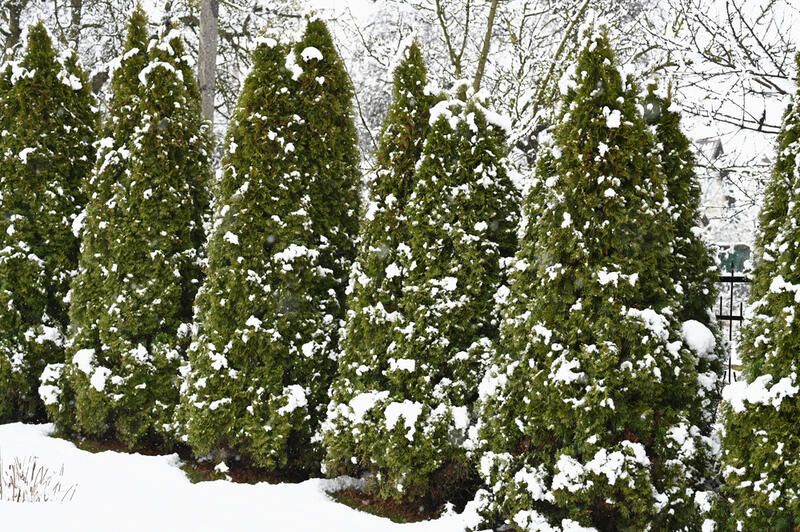

At Hinsdale Nurseries, we understand the importance of nurturing your shrubs through the harshest of winters. Our practical winter care tips are designed to protect your beloved shrubs from snow, ice, drying winds, and the challenges posed by hungry critters. By investing a little effort this fall, your shrubs will emerge healthy and lush as spring returns.
- Opt for Hardy Shrub Varieties
Choosing shrubs adapted to your specific climate is the first step in ensuring their winter survival. Take into account your hardiness zone and growing conditions to select the most suitable plants for your landscape. If you’ve struggled with a particular shrub in past winters, consider replacing it with a native species that better aligns with your environment. Hinsdale Nurseries is thrilled to offer a wide range of native plants specifically selected for USDA Hardiness Zone 6a & 5b.
- Maintain Adequate Hydration
Well-hydrated plants stand a better chance of thriving in winter. Water is a vital resource, and you can provide it with relative ease. Deeply water your shrubs in the fall, especially if the growing season has been dry. Supplemental watering encourages robust root growth, which remains the foundation of healthy plants, even when their stems go dormant. Aim to moisten the soil to a depth of 8 to 10 inches below the surface once a week until the ground freezes.
- Shield Roots from Extreme Temperatures
Newly planted shrubs and those susceptible to cold temperatures in your region require extra protection at the root level. While snow acts as a natural insulator, you can’t rely on a consistent 12-inch layer every year. Spread a 4-inch layer of mulch around your shrubs to create a protective barrier. Options like shredded bark, leaves, straw, or compost all make excellent mulch choices. Be sure to remove the mulch at the first signs of spring growth.
- Ward Off Critters
During harsh winters, hungry deer, rabbits, mice, and other critters can turn your shrubs into a winter buffet, especially when food sources become scarce. Unfortunately, no shrub is entirely safe from animal damage during such times. Fencing vulnerable plants, such as arborvitae and yews, is your best defense. For valuable or sentimental landscape plants, consider adding a protective barrier.
- Consider Anti-Transpirant Srpay on Broadleaf Evergreens
As the temperatures drop, consider applying an anti-transpirant spray like WiltPruf or Wilt-Stop to these plants in late fall. This simple yet effective measure plays a crucial role in their winter well-being. The anti-transpirant forms a protective, invisible shield over the foliage, creating a barrier against the harsh elements. It acts as a moisture sealant, locking in vital hydration and preventing excessive moisture loss through the leaves. For more information please visit our blog on treating winter burn. Broadleaf evergreen shrubs, such as rhododendrons and boxwood, are particularly vulnerable to the desiccating effects of winter winds and will benefit from the spray.
We hope these winter care tips help protect your shrubs and ensure they flourish once again when spring graces your garden. At Hinsdale Nurseries, we’re dedicated to supporting your greenery, no matter the season.
Connect with Us!
630-323-1411
7200 S. Madison St.
Willowbrook, IL
Blog: https://hinsdalenurseries.com/blog
Facebook: https://www.facebook.com/HinsdaleNursery
Pinterest: https://www.pinterest.com/hinsdalenursery/
Twitter: www.twitter.com/HinsdaleNursery
Instagram: www.instagram.com/Hinsdale_Nurseries/
YouTube: https://www.youtube.com/channel/UC5GUOu9abCvL9ZDNJBSunrA
Website: https://hinsdalenurseries.com/





